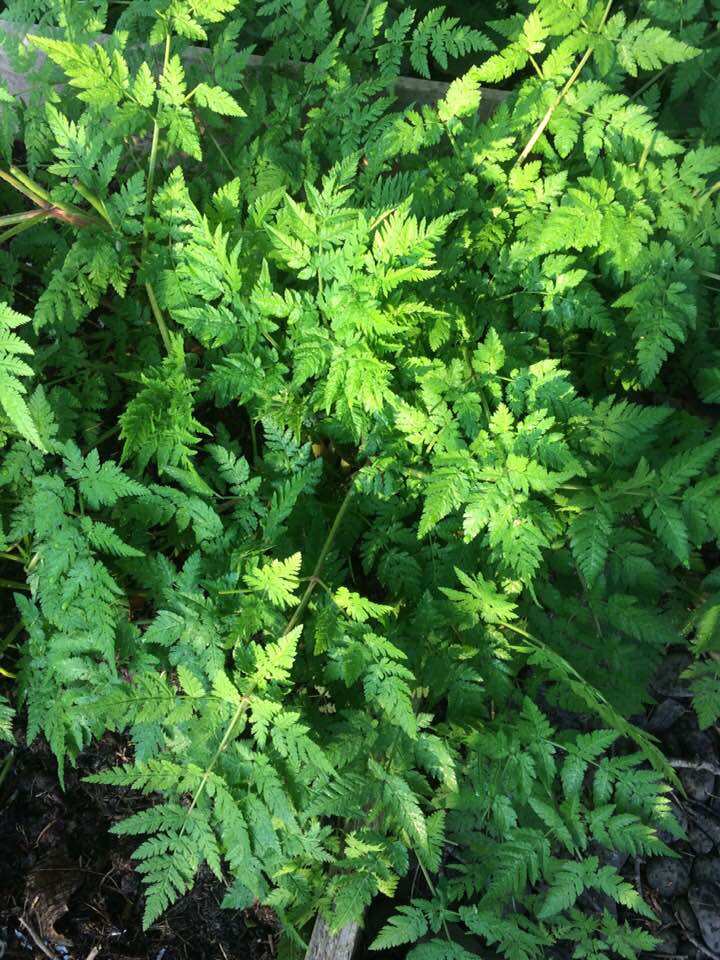
Sweet Cicely is an incredibly delicious and nutritious plant growing free in the hedgerows!
Sweet cicely is a relative of chervil and parsley and is native to Britain. It was popular in herb gardens in the Victorian era. The tradition was for it to be grown near the kitchen door so that it could be easy to reach.
It is a tall herbaceous perennial plant which can grow up to 2m tall, though more likely to be around a metre tall. The leaves look like fern or bracken leaves and they smell – and taste – of aniseed.
All parts of the plant are edible, leaves, seeds and roots. In the past sweet cicely was cultivated as a salad and medicinal herb, but now it isn’t commonly grown in most modern herb gardens – but it should be!
The leaves can be cooked like spinach, fresh leaves taste terrific added to salads, soups or omelettes, the stalks can be used like celery, and the roots can be boiled, eaten raw or made into wine. The sweetness of the seeds make them a great sugar substitute in dishes like rhubarb tart.
In addition, the lovely white flowers are rich in nectar and highly valuable to bees and other beneficial insects.
Other established uses for this herb include as one of the main ingredients in Chartreuse, a liqueur first made by Carthusian monks in the 18th century.
Sweet cicely is a good source of several essential nutrients including:
- Vitamin A and Vitamin C.
- Minerals including calcium, iron, and potassium.
- Anethole, which is an aromatic compound found in the essential oil from sweet cicely, as well as in other culinary herbs like basil. It has antimicrobial, antifungal, and antioxidant properties and is also responsible for the herb’s sweetness.
If foraging you do need to be careful not to confuse sweet cicely with Cow Parsley or, more dangerously, with Hemlock. In practice the aniseed smell when the leaves are crushed is an almost perfect give away but, if you are a nervous forager and to be absolutely certain, get hold of seeds or plants and grow your own.
If you are going to forage, please follow the simple guidelines:
- Always be sure you are sure of the plant before you pick it and never eat any plant you are unsure of.
- Leave plenty behind for wildlife.
- Make sure you have permission to pick
- Only pick where plants are plentiful

